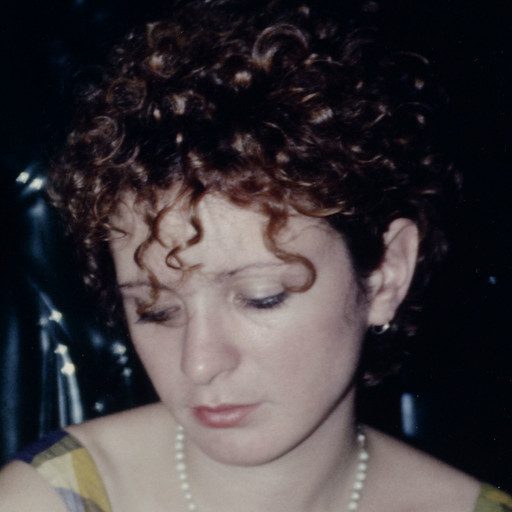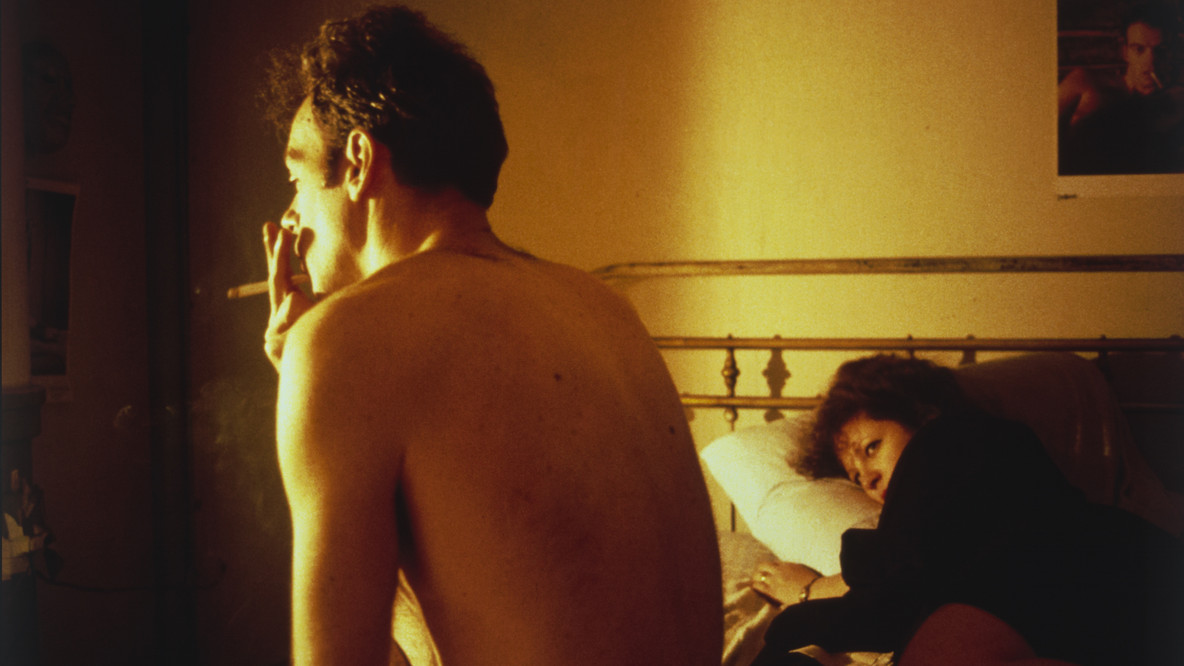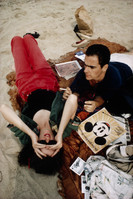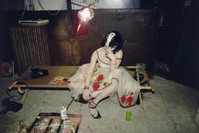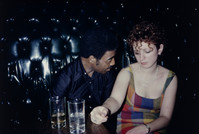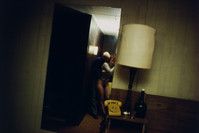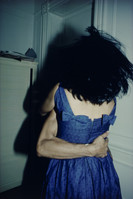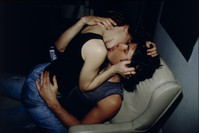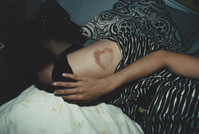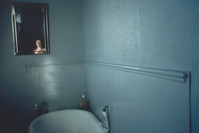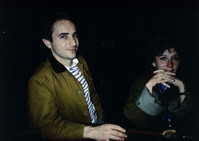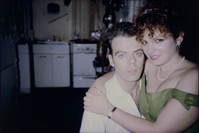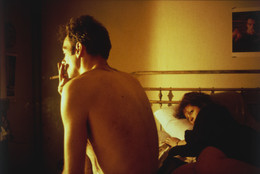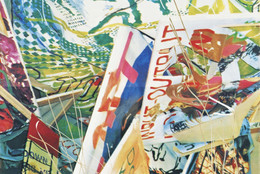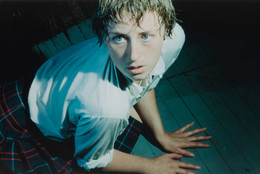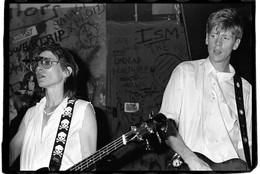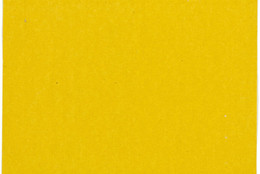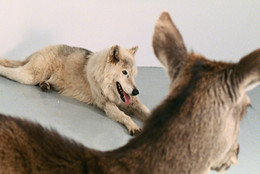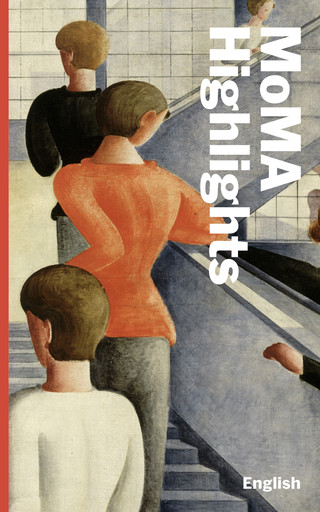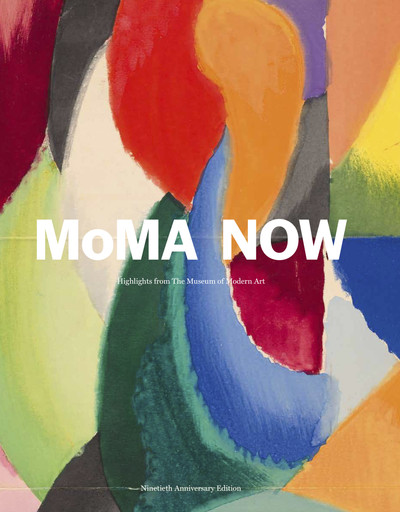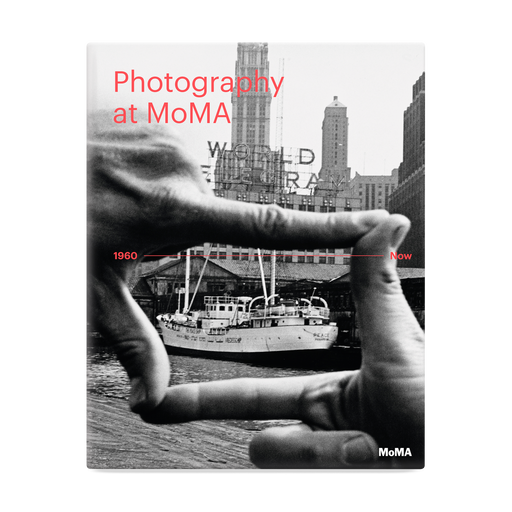“My work has been about making a record of my life that no one can revise.”
Nan Goldin’s photographs are like pages of a diary, sharing at once the intimacy of ordinary connections, the isolation of abuse, and the joyful abandon of being with friends. Upending typical art hierarchies, she showed her work in her loft and in New York City nightclubs and bars in the late 1970s and ’80s, where the audience consisted “entirely of the people in the slide show, my lovers and friends.” Goldin would often reorder her slides, and her restless images capture scenes in the middle of things; they are “fragments of life as it was being lived.” Most of her career has also been defined by activism within her community: first, in the late 1980s, around the AIDS crisis, and then, beginning in 2017, around the opioid crisis, as seen in Laura Poitras’s Oscar-nominated biographical documentary All the Beauty and the Bloodshed (2022).
One of the linchpins of Goldin’s body of work is The Ballad of Sexual Dependency, a slideshow that consists, at any given time, of around 700 candid color photographs of herself and her friends, spanning approximately 1979 to 2004. Goldin’s first slide show was at Frank Zappa’s crowded birthday party at the East Village’s Mudd Club in 1979, but The Ballad of Sexual Dependency took shape as part of the Times Square Show, organized by the artist group Collaborative Projects, Inc. in 1980, and through other versions at the bar where she worked, Tin Pan Alley. The slides click through the projector in quick succession while music, from Nina Simone to the Velvet Underground, plays. Among the most harrowing images is a self-portrait, Nan One Month After Being Battered (1984), in which the artist stares out with two bruised eyes, one bloodshot. Ballad also documents many of Goldin’s friends whose lives were lost in the AIDS epidemic, including the artist David Wojnarowicz and the actor and writer Cookie Mueller. In 1989, at Artist’s Space in New York, Goldin curated the exhibition Witnesses: Against Our Vanishing, which looked at the devastating impact of AIDS on the art community.
The intense realism of her photographs—and their accumulation in slideshows, books, and films—introduces a frank and riveting narrative. You get the sense, as the artist once said, that “the camera is as much a part of my everyday life as talking or eating or sex;” her photographs capture all three activities. Often garishly lit by a sudden flash, Goldin’s images offered a stark contrast to that of other emerging photographers in 1980s New York, who gained renown for posed and conceptual compositions. “I knew about those photographers who were doing media-related stuff, from Cindy Sherman, whose work I love, to Sherrie Levine and Laurie Simmons and all those other ones,” Goldin said, “but I was never part of any movement, and I never read theory. I think that was to my benefit.”
Goldin grew up in a suburb of Boston, one of four siblings in a family torn apart by the institutionalization and death by suicide of Goldin’s sister at 18. Goldin’s film Sisters, Saints, Sibyls (2004–22) and the documentary All the Beauty and the Bloodshed explore this pivotal event. Goldin ended up at an alternative high school with David Armstrong, who would also go on to have a career in photography, and began taking Polaroid pictures of her roommates in drag. She has cited the films of Jack Smith and photographs by Guy Bourdin, Larry Clark, and Diane Arbus as early influences. Goldin attended the School of the Museum of Fine Arts Boston at Tufts University with Armstrong and the photographer Philip-Lorca DiCorcia, and moved to New York in 1978. Among the many inhabitants of her Bowery loft and a frequent presence in her work was the artist Greer Lankton.
In 2017 Goldin founded P.A.I.N. (Prescription Addiction Intervention Now), directly calling out Purdue Pharma and the Sackler family for the opioid addiction and death of hundreds of thousands of Americans. The group staged a series of actions at museums that had accepted donations from the Sacklers. Goldin’s photographs, too, feel like urgent social acts—sites of unexpected community, survival, and beauty. As she has noted, “I photograph myself in times of trouble or change in order to find the ground to stand on.”
Prudence Peiffer, Director of Content, 2024
Note: opening quote is from https://www.nytimes.com/2000/05/07/magazine/self-portrait-nan-goldin.html.
